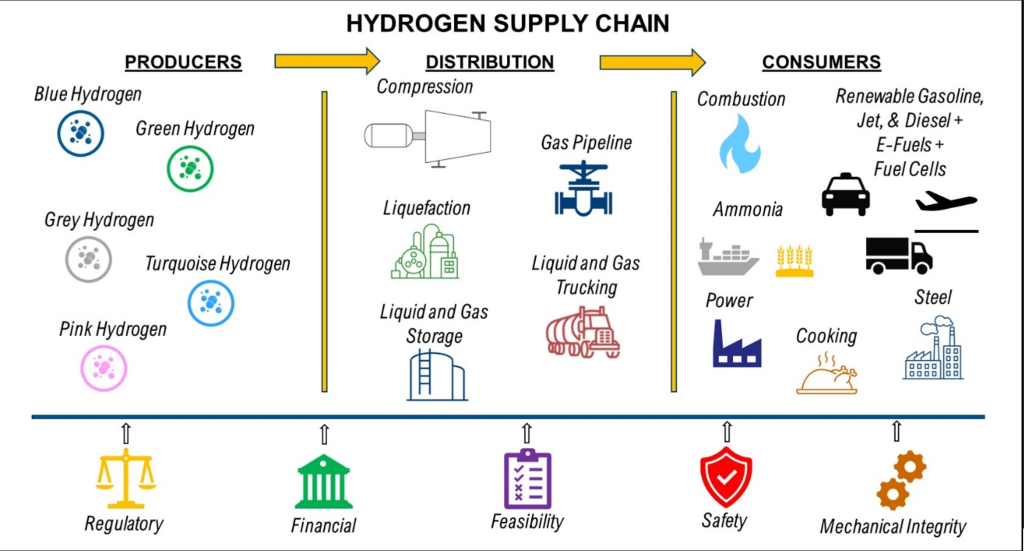Hydrogen Economy Part 2: Converting Strategy into Reality
By: Robert Ohmes with Nathan Barkley, Mike Annon, Greg Zoll and Jessica Hofmann
An in-depth look at the supporting elements of the hydrogen supply chain: economics and regulations and how to operate within the infrastructure. Recently published in Decarbonisation Technology. Below is an excerpt from the November 2023 issue.
The pursuit of the hydrogen economy continues to evolve as energy providers, energy consumers, and logistics firms examine the economic and technical viability of hydrogen as a pathway to meet decarbonisation goals. As highlighted in Part One of this series, many challenges and opportunities exist within the production, distribution, and consumption sections of the hydrogen supply chain. Though not insurmountable, these items require close examination and analysis to drive the hydrogen economy. Within Part Two, we will take a deeper look at the supporting elements of the hydrogen economy: economics and regulations. As is often the case, the regulatory framework will provide the context, rules, and optionality to operate within the hydrogen economy, and the economic incentives, both positive and negative, will provide the cash flow and returns to fund investments in hydrogen infrastructure.
Economic and regulatory drivers
As highlighted in Part One of this blog, for the hydrogen supply chain to function and grow, consumers need to see value in using low-carbon hydrogen, while hydrogen producers and midstream operators need positive economics to justify their investments (see Figure 1). Currently, only about 10% of announced hydrogen projects have reached Final Investment Decision (FID). Besides some of the technical concerns discussed in Part One, the main reasons for the lack of further progress are clear financial incentives and regulatory signals.

Any questions or comments? Please contact us:

